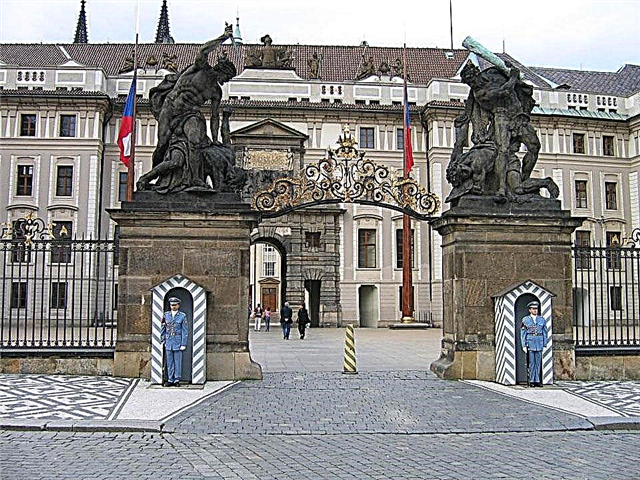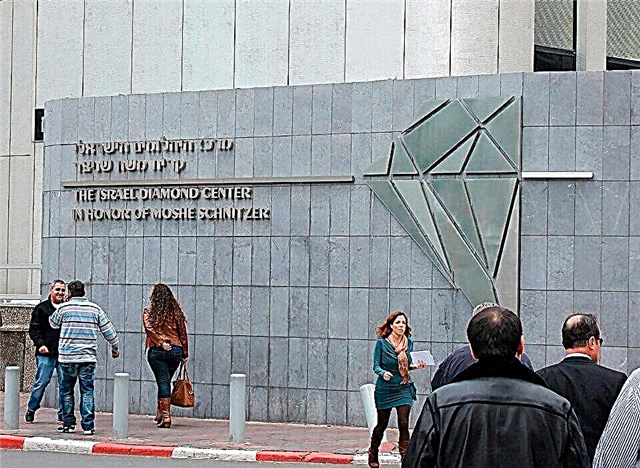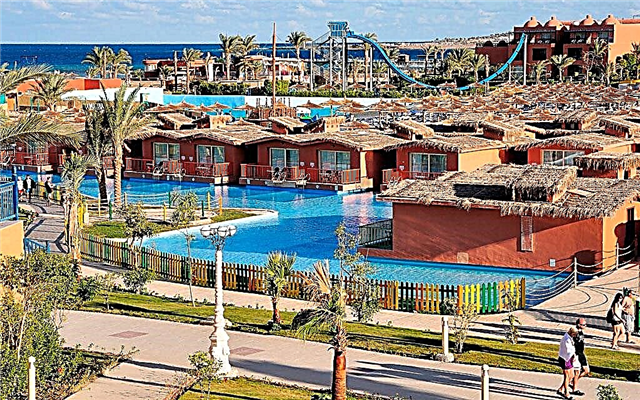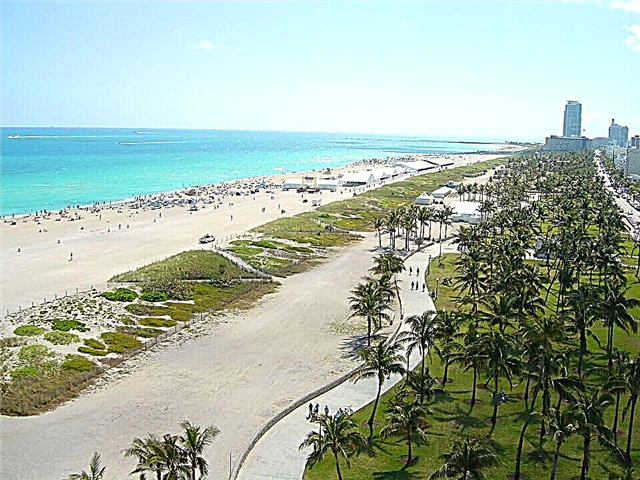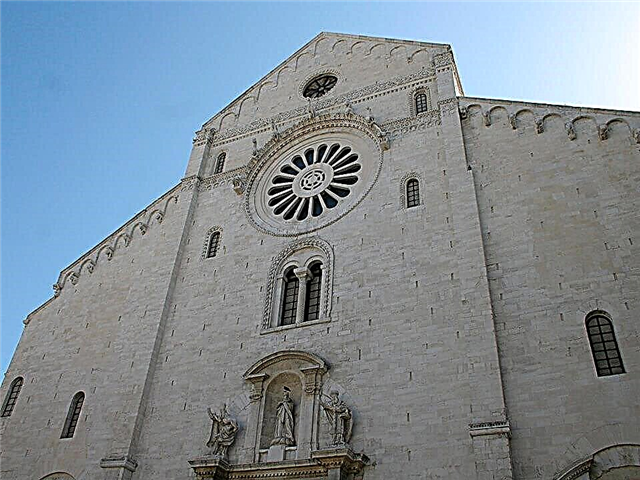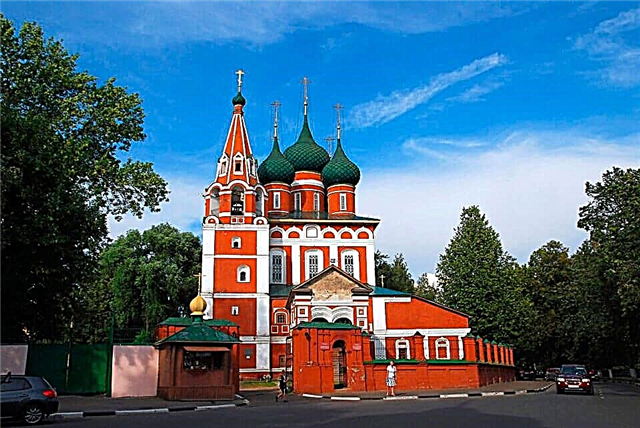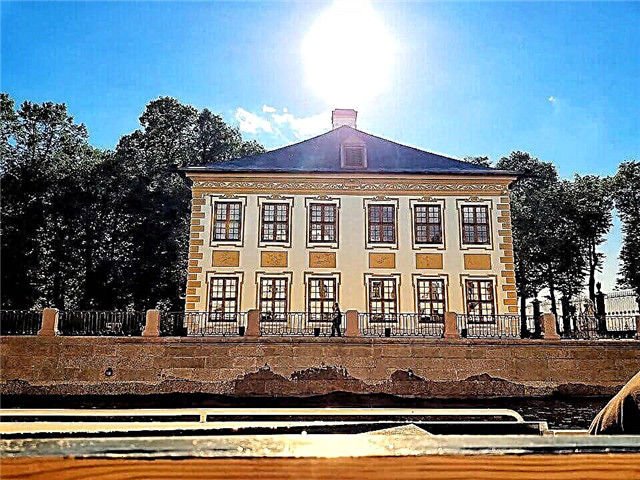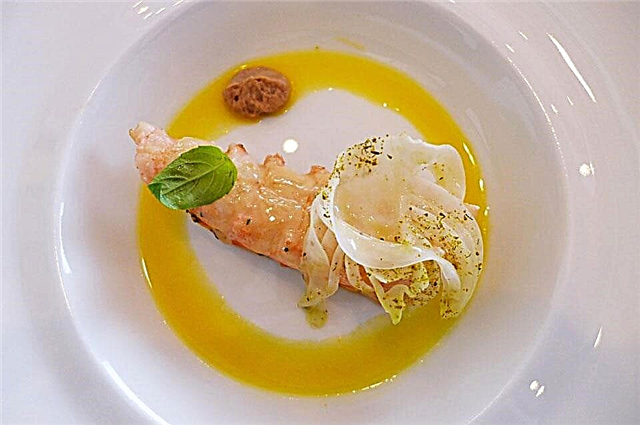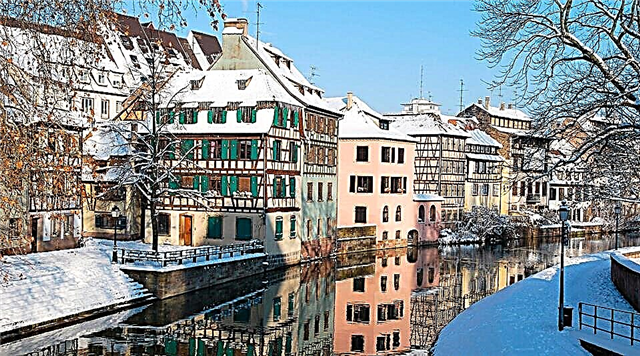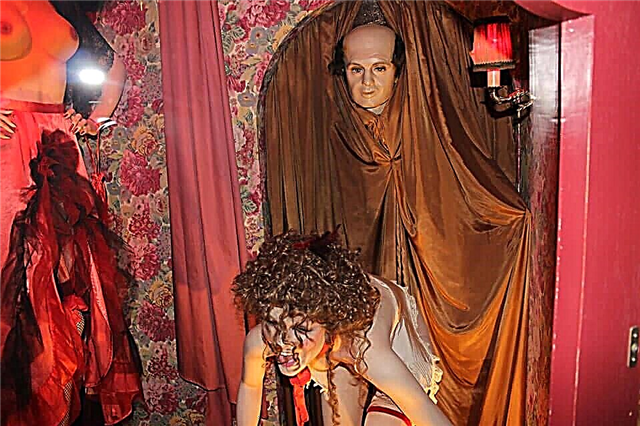Many tourists come to the capital of the Netherlands for short stays. I would like not to miss the opportunity to get to know the city. But what to see in Amsterdam in 3 days and where to go? If you correctly plan your route, you can have time to see many interesting places in such a period. So that you do not waste time on this, we have already prepared a guide. We thought of everything!
1 day
The day of arrival in the capital of the Netherlands usually turns out to be quite troublesome. Time-consuming road from the airport, check-in at the hotel, and just want to relax after a long journey. Therefore, it is especially important to draw up a walking route around the city so that you spend less energy and see as much as possible. The best way to hit the road is from Leiden Square. It is quite interesting in itself, there are many cafes where you can have a snack, and here 5 tram lines intersect. But the main thing is that this square is like a gateway to the historical part of the city.
Amsterdam city card for 24, 48, 72 or 96 hours - from 60 €
Public transport ticket - from 7.50 €
Holland Pass: Amsterdam and Holland - 40 €
Public transport and hop-off boat ticket (24 hours) - 32.50 €
Leiden Square

Life on Leiden Square is in full swing almost around the clock. Street performers perform here - fakirs, jugglers, singers - you can see a whole performance. There are plenty of clubs and cinemas, shops and art cafes around the square. It is here, at Bulldog Palace, that you should buy a coffee in memory of Amsterdam. There is also a beautiful building of the City Theater, and another theater that bears a name similar to the square, several rock clubs and a street bureau where you can buy tickets for performances.
Flower market

The Flower Market is just a stone's throw from Leiden Square. It is extremely popular: even those who have never been to the Netherlands have heard of it. After all, his age is measured in centuries. Back in the 17th century, merchants came here in boats and sold flowers. The flower market is still “on the water”, that is, it is located on docked barges. Here you can buy souvenirs at quite affordable prices - from magnets with views of the Netherlands to T-shirts and baseball caps, buy cheese, even buy hemp seeds - they are sold legally in the country.
But the main thing that buyers come here for is, of course, flowers. Moreover, cut ones make up only a small part of the market assortment. Basically, bulbs of various varieties are sold here. And the most popular are tulips. The price of a package that includes several bulbs is 3-5 euros. Planning to take more? You will definitely get a discount.
De Kreutberg Church

This is a famous Catholic church dedicated to St. Francis Xavier. The common name "Kreuterg" is translated as "chalk mountain". At this place there used to be a chalk merchant's house, and then there was a secret Catholic chapel in honor of Jesus Christ. At that time, Catholics in the Netherlands could only pray in secret - Protestants were in power.
The Church of St. Francis was built in the 80s of the 19th century, the project was carried out by the architect Alfred Tepe. Today both believers and ordinary tourists can come here. At the end of the 20th century, the church was restored - it took almost 24 years. But now you can admire the magnificent paintings and stained glass windows, stucco molding and the main altar. It is so beautiful here that it is simply impossible to forget this place.
Coin tower

This is one of the oldest buildings in the city. In the 15th century, Amsterdam was surrounded by strong fortress walls, and the entrance to the city was guarded by sentries on watchtowers. In 1618, there was a major fire. Only part of the western tower was not damaged by the fire. It was later set up in the Renaissance style. A graceful clock tower and a spire were installed on top. Bells ring every quarter of an hour, and on Saturdays you can hear a professional bell ringer playing. In the 17th century, during the war with France, the Mint was evacuated to Amsterdam. It is located in the guardroom next to the tower. This is how the name of the tower was born. Today this place is very popular. The tower is located at the confluence of the Singel Canal with the Amstel River.
Spøy Square and Beguinage Courtyard

The name of the Spøy square comes from the word "spillway". Once in these places the spillway was actually the southern border of the city. In the 80s of the 19th century, they covered it up and laid out a square here. Now it is a favorite place for book lovers. Book and art fairs are regularly held here, and there are countless bookstores in the surrounding area. The statue of a street boy installed here is a real symbol of the city's inhabitants, who are not used to becoming limp under any circumstances. The old Lutheran church, the main building of the university and the unusual building "Helios" will also be seen by everyone who comes to Spøy square.
The main entrance to the Beguinage courtyard is also located from the side of the square. It is an arch decorated with stucco molding. Beguinage - this was the name in the Middle Ages of the place where women lived who did not take the tonsure, but behaved almost like nuns. Beguinage in Amsterdam dates back to the 14th century. Today, the beguys are no longer here, but several dozen single women live. The center of the courtyard is a lawn with a statue of Jesus Christ. A Protestant church and cemetery are nearby. And in one of the residential buildings there is a Catholic church. You can also see an old wooden house dating back to the 16th century.
Dam Square

The name of the square is deceiving for the Russian ear. No, we are not talking about the beautiful ladies of the past centuries. Dam means dam. In the 13th century, a dam appeared here, which connected the settlements located on different banks of the Amstel River. The word "dam" in translation into Russian just means "dam". The dam expanded and strengthened, eventually turning into a square. Now there was a brisk trade here, and the Fish Market became famous even outside of Amsterdam.
Of course, you can see many sights here. For example, the Gothic church Nieuweckerk, built at the end of the 14th century. Here those who are to rule the country are crowned for power. The Madame Tussauds Wax Museum will also be of interest to tourists. And also the Royal Palace (former town hall) - a building of the 17th century. The most modern monument is the National Monument dedicated to those killed in World War II.
Red light district

The whole world knows about this place. And a person who has visited Amsterdam will definitely be asked if he has visited the Red Light District. Although the residents of the country themselves do not see anything surprising and exciting in this - prostitution in Holland is officially allowed, moreover, it is inscribed in everyday life. Prostitutes are also taxpayers. The risk of getting sick, thanks to women of easy virtue, is also minimized - all these ladies undergo regular medical examinations. On average, a lady charges a client € 50 for a 15 minute visit, and a transsexual person charges € 30.
Those who find themselves in the Red Light District during the day - we can recommend returning there at night - the spectacle will be much brighter. The history of the quarter is also impressive. Prostitutes were filming clients here already in the 14th century. They were most popular with sailors returning from long voyages. Local taverns were opened for sailors. Today, as soon as it gets dark, it looks like a holiday is starting in the Red Light District. Music sounds, lights are on…. Girls - blondes and brunettes, white, black and Asian, large and petite, thin and fat, sit on high chairs in beautifully illuminated display cases.
Not everyone who comes to the Red Light District becomes their client.Most of them are just tourists who came to take a look (by the way, it is forbidden to take pictures of girls), but the ladies smile and wink at everyone without exception. When a client comes to the girl, she pulls down the curtain. During the day, the red light district is empty, although some prostitutes continue to work. If you're lucky, you can get to the "open day". In this case, you can look into the girls' rooms just for fun, and chat with the beauties. This is done so that people do not treat the priestesses of love as second class. Many of the girls are very pleasant companions.
Oudekerk Church

This name translates to "old church" and Oudeckerk fully deserves it. The chapel appeared here at the beginning of the 13th century, and the stone church began to be built in the 14th century. There is no older building in the city. In order for the weak soil to withstand the weight of the temple, it was repeatedly completed and rebuilt. In the final form, he took the form of a cross. In the 16th century, a bell tower in the Renaissance style was erected, its height is 67m. The temple has unique acoustics. There are 3 organs here, the largest of which is considered the best in Europe. There is also a 17th century carillon. And a bell from the 15th century.
The walls of the temple are whitewashed, but the stained glass windows of the Catholic period remain, they were made in the 16th century. For several centuries, the temple served as a cemetery; many famous personalities are buried here, for example, Saskia - Rembrandt's wife. In the second half of the 20th century, the temple was closed for reconstruction, and reopened in 1979. Today, people are not only praying here. Oudekerk hosts an international organ music festival, honorary ceremonies and even light installations.
Central station

Even those who come to Amsterdam by plane should visit Central Station. The building, built in the 19th century by the design of Peter Kuipers, is so beautiful that it evokes an association with an old castle. An additional effect is given by the evening illumination. The station is a place where the routes of a wide variety of transport converge. Trains and electric trains, intercity buses arrive here. There is a metro station here, and next to the pier where liners and ferries stop.
On one of the towers of the station, you can see a clock, and on the other - a weather vane, which indicates the direction of the wind. Inside the station, today is adjacent to yesterday. For example, there are ticket machines here, but there is also a grand piano that anyone can play. Don't forget that the people of Amsterdam are big fans of bicycles. There is a spacious parking lot for two-wheeled vehicles.
Church of St. Nicholas

The church is located in the ancient part of Amsterdam and has the official name "Church of St. Nicholas within the walls", because it was once surrounded by the walls of the fortress. The Church of St. Nicholas was built in the second half of the 19th century according to the project of the architect Blays. It has 3 towers and a very beautiful rose-shaped window, which depicts Jesus and His disciples. Also on the pediment you can see the sculpture of St. Nicholas. He has always been considered the patron saint of sailors, and in Amsterdam, a city on the water, he was especially revered.
Canal cruise

It is simply impossible to visit Amsterdam and not take a trip through its canals. Even if you will stay in the capital of the Netherlands for only a few hours, you should buy such a tour. It is inexpensive and will not tire you at all. But there will be more than enough impressions. The choice of tourists is wide - several hundred boats and ships run along the canals. An hour's walk costs about 15-16 euros. You can also save money - buy a combined excursion that includes a visit to the museum and a canal cruise.
Those traveling with a company can rent a boat, which will be driven by a professional captain. A two-hour journey will cost 200-250 euros. The most convenient way to start your journey is from the Central Station. Boats leave every half hour, in the high season there are queues of people who want to ride. You can travel in any weather. In rain and strong winds, boats are covered with glass roofs. Evening cruises are more of an entertainment nature. On board, they offer a full dinner and wine, or a lighter version - snacks, pizza, alcoholic beverages. The cost of such a cruise is slightly higher - about 80 euros.
Active tourists who want to see as much as possible are advised to take a water taxi ticket. A day ticket costs about 27 euros. You can get off at stops, go sightseeing, then come back, get on the boat and continue on. You can go on cruises even in the cold season. In winter, evening cruises are especially spectacular during the Festival of Lights.
4-course dinner cruise - 79 €
Evening pizza cruise - 39 €
Canal boat cruise with open top - 13 €
Canal walk - 13 €
1.5-hour evening canal walk - 19.50 €
Museum of Sex

Even children are allowed into the Museum of Sex, albeit accompanied by adults. From here you can bring erotic souvenirs that are sold in shops located on the territory of the museum. Also, guests will receive just a sea of different information related to eroticism - from ancient times to the present day. And, of course, special attention is paid to the Red Light District. There is even a special room that imitates this place. Here you can see the wax figure of the priestess of love.
Nemo Museum

The museum is located next to the Central Station. Its shape resembles a ship that suddenly found itself on land. Such an unusual look was given to it by the architect Renzo Piano. The museum was opened in 1997. Its name can be misleading, making you recall Captain Nemo from Jules Verne's novel 20 Thousand Leagues Under the Sea. Yes, and there is a cafe "Nautilus" here. And yet, first of all, NEMO is a science museum. And his main guests, those who are most awaited here, are children. Young tourists come not only from different cities in the Netherlands, but also from other countries. It is here that they can get a visual idea of the structure of the world. Here they understand that the laws of science, combined with imagination, can work wonders.
Here you can take exciting journeys to various fields of science, and the exhibits are allowed to be taken in hand. The rides are also delightful for the children, thanks to which they learn new facts for themselves concerning light, sound and energy. If you wish, all the places described above can be examined in one day, or you can choose something especially interesting for yourself and your companions.
2nd day
The second day of your stay in the capital of the Netherlands is best devoted to museums. There really is something to see here. It will be interesting for both adults and children to visit these museums. In conclusion, it would be nice to go to the zoo. And to end the day full of impressions - in a cozy pub with a glass of beer.
OBA City Library

The public library is located near the Central Station. It has 26 branches, so it is convenient for all residents of the city to use the funds. More than 4 million readers are recruited annually. The library is open daily - until 10 pm. She can be proud of the truly state-of-the-art equipment. There are hundreds of places where you can work with the Internet, special places with computers for viewing digital publications, there are places to listen to music files or just read.
Today, the library houses a theater, a cafe, a restaurant, and conference rooms. Almost 6 thousand events are held annually. The Amsterdam Library is recognized as the largest public library in Europe. It all started very modestly. The public library opened about a hundred years ago, in 1919, in a modest building on Keizersgracht. The modern building was only completed in 2007, and the library soon became the most visited cultural institution in the city.
And what about those whose plans do not include reading? First, to see a beautiful creation of modern architecture, where, thanks to free Wi-Fi, you can study any modern edition.Secondly, go up to the 7th floor, in the La Place cafe. Here not only the cheapest breakfasts in the city, but also a wonderful view of Amsterdam.
Anne Frank House Museum

This museum makes a deep impression on tourists. Anna is a Jewish girl. Until 1933, her family lived in Germany. When the Nazis came to power, it became clear that in the near future all Jews were waiting. The Frank family hastened to leave for Amsterdam. But, thanks to the Second World War, the Nazis came to the Netherlands. All Jews were to be sent to concentration camps. But the family did not leave the old 17th century house. There was once a mansion here. And then a company that produced household appliances was located. One of her employees was Anna's father.
A family friend constructed a secret cabinet. Behind it was a niche where the whole family hid during the day. When the company closed in the evenings, you could go out. But all the same, I had to be very quiet so as not to attract the attention of strangers. Anna kept a diary, where she wrote down the details of the family's life, shared her fears with the diary - after all, it was not known what tomorrow would bring. So the family managed to hide for 2 years. In 1944, according to a denunciation, the family was arrested and sent to the camp, where Anna died shortly before the end of the war.
Her diary was published and received a wide public response. In the 50s, the house was about to be demolished, but public opinion won out. The result was the opening of the Anne Frank Museum. There is a statue of a girl in front of the entrance, near which there are always flowers. In the museum you can see the famous diary, photographs of family members, furniture and household items of that time, photographs of Amsterdam during the Second World War. The museum is open daily.
Rijksmuseum art museum

The museum is located in the historic center of the city and is very popular. Usually you have to stand in line to get here. The museum was created with the participation of King Louis Bonaparte of Holland. At first he did not have a permanent place, he had to move. In the 80s of the 19th century, a separate building in the neo-Gothic style was built for the museum. Later, in accordance with the needs, it was rebuilt and reconstructed. This could be done, for example, in order to show the public a large canvas by Rembrandt "Night Watch".
Today the museum is so large that it is simply impossible to walk around it at once and admire all the exhibits. After all, here are collected paintings, furniture, utensils, porcelain, sculptures created by the country's masters - starting from the 11th century. But you can see the most interesting. For example, the work of such great artists as Rembrandt, El Greco, Rubens, Van Dyck, Veronese. The exhibition of doll houses is also very popular. Among them there are truly old ones - from the 17th century. The collections of porcelain and elegant ship models also make a great impression on tourists.
Rijksmuseum: skip-the-line ticket - € 18.50
Van Gogh Museum

Next to the Rijksmuseum is the Van Gogh Museum. The great merit that such a museum has appeared belongs to Johann Van Gogh, the wife of Vincent's brother. Theo and Johanna carefully kept the artist's letters - hundreds of them have accumulated. Most of them contain illustrations for the written text. Pictures and drawings were preserved with the same care. Johanna became a widow at the age of 29. Years later, she prepared Van Gogh's letters for publication. She passed on the originals and artwork to her son Vincent. He suggested that the city authorities build a museum.
The building was designed by the Dutchman G. Rietveld, and in 1973 the museum was opened. Today it contains about 200 paintings by the artist. Moreover, they are placed as Vincent Van Gogh himself once conceived. The whole life of the great painter passes in front of the viewer. At first, museum guests see early works, still angular and imperfect. Then the paintings created in Paris, when Van Gogh discovered the work of the Impressionists. Further - Arles, in this small town Vincent wrote his masterpieces. Finally, Saint-Remy and Auvers are the last pictures. Also recreated the setting, as close as possible to the one in which Vincent Van Gogh worked.
Van Gogh Museum ticket - 20 €
Diamond Museum

This museum has appeared in the capital of the Netherlands thanks to the jewelery cutting company Coster Diamonds. Tourists can visit both the diamond factory and the museum at the same time (they are located in the same building). Guests will see how jewelers are cutting stones, learn a lot of new information about what diamonds are. In the museum, they will watch a film that tells how diamonds are mined and how they are cut. Guests will also be presented with exhibits found in various parts of the world - from South Africa to India.
You can also see works of art, for example, a copy of the famous painting by Van Gogh "Starry Night", which all sparkles and shimmers with a diamond shine. Also presented are diamond jewelry made by famous jewelers. The museum's gift shop also sells diamonds and diamonds.
Heineken Beer Museum

A very impressive museum that you just can't help but love. Heineken beer went on sale in the middle of the 19th century. Generations passed in the Heineken family, and their beer continued to conquer the world. It is located in the building of a brewery, built in 1867, and which served its owners for more than a century - until a new factory was built. Along with the entrance ticket, tourists receive a bracelet with rivets. They can be exchanged for glasses with a foamy drink and a souvenir you like.
The guests will see how the brand, where the beer was produced, developed, how the Heineken branded bottle changed its appearance over the years. There are also attractions, for example, anyone can create a name label. Here they give lectures on the beer business, show company commercials, hold tastings. Heineken is a renowned football sponsor. Therefore, right in the museum you can watch the broadcast of major matches, see exhibits from the world of football. You can buy the kind of beer you like, and at the end of the excursion, guests go to the brand store, where they receive souvenirs as a keepsake.
Albert Cuyp Market

For those who find themselves in Astredam on weekdays, we recommend visiting the Albert Kuyp market (it is closed on Sundays). Here you can buy unusual souvenirs and feel the real spirit of the capital of the Netherlands. The official age of the market is over 100 years. Today, there are about 300 stalls that sell goods from all over the world. Here you can see the inhabitants of Asia, Africa, Latin America, buy spices, fabrics, unusual handicrafts, jewelry. There are also many cafes offering national dishes from different countries.
The market is named after the famous artist Albert Cuyp, and here you can also see a statue of the Dutch singer Andre Hazes, who was very popular with his compatriots. It is worth taking some time to the Museum of Cheese, which is located here. Famous Dutch cheeses - you will learn a lot about them. And, of course, you can buy "the same cheese". The market is located in the De Pijp area and is easily accessible by tram number 4, 16, 24.
Vondelpark

Residents of the city say about their favorite park: "This is a place where you can feel completely free." You can jog along the paths or lie on the grass, barbecue and walk the dogs, take your child to the playground, and go to the museum or summer theater, which are located in the same park. You can even make love - just away from playgrounds and public trails, please. And do not leave condoms!
The park gives the impression of a corner of natural nature, although it is located in the center of the city. It was destroyed more than 150 years ago, and received its modern name later, when a sculpture of the playwright Jost van den Vondel was installed here. Lurking in the depths of the park and the sculpture of Picasso.The artificial reservoirs of the park were combined into one large one, and the shores were designed in such a way that the impression of a natural lake is created. Up to 10 million people visit Vondelpark every year.
There is a very interesting Museum of Cinematography, where lectures and films are shown "of all times and peoples" - from silent films to modern 3D technologies. In the open-air summer theater, you can listen to a variety of musical works - from classics to modern musicals. Those who wish will rent skateboards or play tennis on the wonderful courts where prestigious tournaments are held. There are cafes and restaurants.
Zoo

The title is translated as follows: "Nature is the mentor of art." It was founded in 1838 and is the oldest zoo in the country. There is a planetarium and 2 museums - geological and zoological. An interesting fact - in this zoo until its death, the last quagga on the planet was kept - an animal very similar to a zebra, exterminated in its homeland in Africa. You can see a wide variety of animals that are kept in conditions as close as possible to their natural habitat.
Various types of monkeys have settled here, the so-called "Monkey Rock" has been arranged for them. Huge macaw parrots delight with their bright colors. A whole family lives in the zoo. And in the "Land of Lemurs" visitors can come across the bridge and chat with these cute animals. Three ponds are given to waterfowl. The setting of the South American Pampa has been recreated. Here you can see capybaras, anteaters, llamas and other animals. Attracts visitors "Wolf Forest" and aviaries where elephants live. Even the "Night Jungle" has been arranged for those animals that are nocturnal.
ARTIS Zoo: Skip-the-line entrance - 23 €
Amsterdam Micropia skip-the-line ticket - 15 €
Beer 't Arendsnest

You can end your second busy day in Amsterdam at the beer house located at Herengracht 90. You can taste 350 beers, not counting the 250 seasonal beers. Moreover, only the products of Dutch breweries are presented. Periodically, themed events are held here, and tastings are organized. Pub guests note that they have never tasted such delicious beer as here. Old recipes, proven over the centuries, what can you say!
There is no need to fear that you will run into a crowd of people here. The restaurant is not crowded on weekdays. You can try draft beer - buy small glasses first, if you like it - order a large mug. If you like bottled beer, you will have to take the whole bottle. However, hardly anyone regrets this. The pub is open from 4 pm to midnight, and on Fridays and Saturdays from 2 pm to 2 am. Walk, so walk!
Day 3
If there is an opportunity to spend one more day in the Netherlands, it is worth spending it on a trip - to one of the cities or villages located nearby. There you can feel the atmosphere of the real Holland. Communication here is excellent, and you can get anywhere from the Central Station in a short time. Of course, you won't have time to go everywhere, so choose - who likes what.
Villages and suburbs by hop-on hop-off bus - 28 €
Zandvoort

If you missed the sea in Amsterdam, go to Zandvoort. This is a small resort town where everything contributes to bliss and relaxation. Wide white sand beaches and the sound of waves. Zandvoort was founded at the end of the 11th century. At first it was a small village, but in the middle of the 19th century it began to develop as a resort. Literally the name of the place is translated as "sandy ford". At the end of the 19th century, a railway was built here, which greatly increased the number of tourists. An interesting fact - it was here that one of the first Dutch films was filmed. It happened in 1905.
Even if you arrive on a cloudy or rainy day, there is plenty to do in the town. There are numerous cafes and bars, shops and restaurants. You can sit with a cup of coffee almost on the beach - glass walls will protect you from bad weather. The commuter train journey will take only half an hour.
Zaanse Schans

The windmill is a real symbol of the country. Such a mill was the breadwinner. It depended on the wind whether the grain would grind, whether the butter would be knocked down. Picturesque Dutch mills have repeatedly appeared on the canvases of artists, were captured in photographs, in films. The mills can be seen in different parts of the Netherlands. But it is in the village of Zaanse Schans that tourists get to know different types of mills. Many of them are working, you can watch the process.
Rarely does anyone avoid the opportunity to go to a farm where cheese is prepared according to old recipes, and, of course, buy such a rarity. And in the Zaanse Schans, in front of tourists, they make national shoes - klomps. They are also eagerly bought as souvenirs. The open-air museum can be seen at any time. But in order to get inside the mills, you need to arrive between 10 am and 5 pm, the entrance ticket costs 10 euros. The most convenient way to get from the Central Station is by bus or train.
Rotterdam

Guests are impressed by Rotterdam. And how could it be otherwise - the second largest city in the Netherlands, the largest port, which until recently was considered the busiest in the world. Its center is built up with futuristic buildings that seem to have come from science fiction films. There are also museums in the city that are worth visiting. You can also admire the windmills - there are 7 of them. As you can see, the past is organically combined with the future.
Shopping enthusiasts will appreciate the shopping areas. For those looking for a vibrant evening life, there are dozens of clubs where you can listen to all kinds of music. Some tourists come here because of the magnificent Rotterdam Zoo. And, of course, everyone, without exception, celebrates the special atmosphere of the city - more cosmopolitan than all other cities in the Netherlands.
Rotterdam is an old city. It was founded in the 13th century on the Rotta River, where there was already a dam. These 2 words merged and gave the name to the city. The location of Rotterdam was very favorable and it quickly became a major trading city. In the 16th century, it survived plundering by the Spaniards, but was successfully revived. And in the 17th century a new port was built here. Wars also left their mark on Rotterdam. During the First World War, the base of the special services was located here. And during the Second World War, the city was bombed.
Interesting things to see in Rotterdam:
- Kijk-Kubus are "cubic houses" designed by P. Blom.
- De Markthal is a market where residential apartments are located. The painting on the walls and ceiling deserves special attention.
- De Verwoeste Stad - “The Ruined City”, a memorial dedicated to the Second World War.
- Erasmus Bridge - the length of this bridge, which connects the northern and southern parts of Rotterdam, is 800 m. The spectacular bridge has become a symbol of the city.
- Rotterdam Tower - you can climb the observation deck (100m) to see the panorama of the city. And the total height of the tower is 185 m.
- De Brug is a very interesting office to see. It is built in the form of a bridge over the plant.
- The Rotterdam White House is the first skyscraper built in Europe. The building was erected at the end of the 19th century, its height is 45 m.
- Church of Laurenskerk - there are not many medieval sights survived in Rotterdam. This temple is one of them.
The Hague - Delft

The Hague is the Queen's residence. The government of the country sits here. It is also the legal capital of the world. After all, it is here that the International Court of Justice is located. At first glance, it becomes clear that The Hague is an aristocratic city that sacredly reveres its traditions. As in the old days, there are only low-rise buildings here, each of them is built with great taste. Not a single high-rise building will disturb the appearance of the city. The streets here are like in the Middle Ages - narrow. It is very green - there are three dozen parks here. Tourists take pictures of the Peace Palace, because it resembles a fairytale castle.They stop at the Parliament, visit the Mauritshaus Museum of Painting, which displays paintings by Rubens, Rembrandt and other great artists.
You can continue your walk to the suburb of The Hague, Scheveningen, which faces the sea. Delft is another interesting town. It is on the way from Rotterdam to The Hague. The great painter Vermeer was born here. Quiet streets, old houses - it seems that the yard is still 17th century. And the local market appeared even earlier - in the 14th century. Its main products are fresh seafood and flowers. In local shops it is worth asking the price for porcelain. Delft is the capital of Dutch porcelain.
Volendam - Edam - Marken

The picturesque fishing village of Volendam has long been loved by artists, performers and people of other creative professions. Here you can clearly imagine how fishermen lived in the 19th century. But first, a few words must be said about the nearby town of Edam. After all, Volendam was originally the harbor of Edam. The town was founded in the 13th century; ships were built here for several centuries. But then the main occupation of the inhabitants was the production of cheese. Today, approximately 7,000 people live in Edam. Cheese fairs are held here on Wednesdays. But the delicious cheese bearing the same name as the city can be bought at any time.
Volendam has about 3 times more people than Edam. But gastronomic tourism is also popular here. People come here for the most delicate herring, smoked eels, and fresh oysters. All this is sold here literally for a penny. You can almost always buy fresh fish from boats - from fishermen who have just returned from fishing. Tourists also buy small fish to feed the birds. This is a kind of local attraction. Ducks and cormorants are ready to grab treats right from their hands.
The most crowded and noisy place is the Volendam embankment. It is slightly taller than the rest of the village, as it sits on a dam that protects the city from the sea. Another feature can be noted here - the absence of curtains on the windows. This is also a tradition. The wives of the fishermen who went to sea did not draw the curtains - they say, we have nothing to hide, we are loyal to our husbands. The custom stuck. Attractions include the Historical Museum, the 19th century St. Vincent Church and Art Gallery, as well as bronze figures of people of the past that can be seen on the streets.

The village of Marken, located on the island, is also worth visiting. You can get to it by ferry or bus (a highway has been laid). Less than 2 thousand people live in the village, but it looks very colorful. Previously, Marken was part of the land, but in the 13th century, after a flood, it turned into an island. Therefore, old times come to life here. Houses on stilts, well-groomed courtyards, dishes in a cafe - you will not try such things anywhere else ...
To visit all these places, it is most convenient to purchase a WaterLand ticket - a magnetic card that costs 10 euros. It makes it possible to travel without restrictions on the route - from Amsterdam to Volendam, Edam and Marken.
Volendam Marken Boat Cruise & One Day bus ticket - 23.50 €
From Amsterdam: train Volendam, Edam and Zaanse Schans - 49 €
Kinderdake

To visit this famous windmill park, located in the small village of Kinderdijk, you need to drive from Amsterdam 2.5-3 hours. First to Rotterdam, and then by boat, or first by tram, and then by bus. But the sight is worth it - here you will see 19 windmills that were built in the 18th century. The name of the village “children's dam” is associated with a legend, when after a flood only a cradle with a child survived on this place. And so many mills were built here in order to retain water and prevent two local rivers from flooding the village.
The mills stand on the banks of the canal - an unforgettable sight. One of them is available for inspection from the inside. And to go around the entire park, you can rent a bike. In winter, it is also worth coming here to admire the skaters who glide along the ice of the canal. A sight like from an old book. The park of mills is under the protection of UNESCO.
Texel Island

The film "Knockin 'on Heaven" received wide recognition in Russia. How his heroes wanted to see the sea! The film was shot on Texel Island. Or Tesel, as the Dutch themselves call him. The large island contains 7 towns and several dozen villages. It is also a barrier between the North Sea and the Gulf of Wadden. Today it houses a nature reserve where birds live. The island's economy is directly dependent on tourism. Guests exploring the territory, going on foot, order cycling or horseback riding. You can get to the island by ferry, which departs from the port of Den Helder.
The island is also famous for the fact that it hosts a major catamarans regatta. There is also the Maritime Museum, where you can see things raised from sunken ships. You can also climb the old lighthouse and enjoy the view. And in October there is a 10-day Blues Festival.
Must-try food

There is such a thing as "gastronomic tourism". But whatever the purpose of your trip to this amazing country, there are things that you should definitely try in the Netherlands. Amsterdam is a cosmopolitan city, and many dishes appeared here already in the colonial era. Now in the capital you can buy thematic tours. One of them is dedicated to the pubs of Amsterdam, and the other is called "Gastronomic Bike Tour". But not everyone is ready to saddle an iron horse, and besides beer, you need to try something more substantial. It remains to embark on an independent journey through cafes and restaurants. What are we ordering?
Shish kebabs, which here, as in Russia, are made from pork, beef or even chicken. They just serve them with peanut sauce (a mixture of soy sauce, peanut butter and chili sauce).
Bami Goreng is actually an Indonesian dish. But the Dutch loved it so much that now it is served in every restaurant. These are noodles with chunks of meat, beans and soy sprouts.
Dessert Oliebollen - sweet donuts are most popular in winter - traditionally served at Christmas. But at other times of the year they can also appear on sale. Raisins are included in the ingredients of the donuts, and those to which more apple pieces are added will be especially tasty.
Boerenkool Stamppot - mashed potatoes are familiar to Russians. And the Dutch mix it with finely chopped kale. Unusual, tasty and very healthy. You can order this dish as an appetizer, or as a side dish for meat or fish.
Erwtensoep is a pea soup. In fact, the Dutch don't like soups. In restaurants you will hardly see "national soups" except for pea. They are sensitive to its preparation, the first course is served in portioned pots. The composition includes chopped smoked sausage, and the soup itself is so thick that there is a spoon in it.
Hollandse Nieuwe is the herring that the royal family eats. It is she who is presented with the first catch in the new year. Herring is salted in special barrels, and it turns out to be simply incredibly tasty. It is impossible to resist.
Kibbeling - deep-fried fish pieces. This dish can be tasted not only in cafes and restaurants, but also in street tents. Pieces of white fish in the dough are served with garlic sauce.
Rookworst - this is already meat. More precisely, smoked sausages. The Dutch are very fond of them. They add them to soups, serve them with beer, put them on bread and make sandwiches, and, of course, eat them as a separate dish. The recipe for their manufacture is not so simple - after all, 3 types of meat are included in sausages. Tourists like this dish so much that they buy packaged sausages and take them home as souvenirs.
Drop - lollipops, and suddenly salty? Yes, yes, and you should definitely try them. Licorice candies, although they have an unusual taste, are very good, and, by the way, are useful during colds.
What else is worth trying? Small pancakes Poffertjes, Stroopwafels - waffles with caramel, Vlaamse friet - fried potatoes in a special way, soft inside and crispy outside, Kapsalon - also fried potatoes, but served with kebab or shawarma, Old Amsterdam - cheese that is the pride of Amsterdam. You can also recommend ordering Stamppot - mashed potatoes with sausage, this dish is prepared here unusually tasty. The Dutch are also very fond of fried salmon.
This is how he is, Amsterdam and its environs - noisy, multinational and unusually charming. Come here any time of the year and it will charm you forever.
We recommend the following hotels in Amsterdam:

